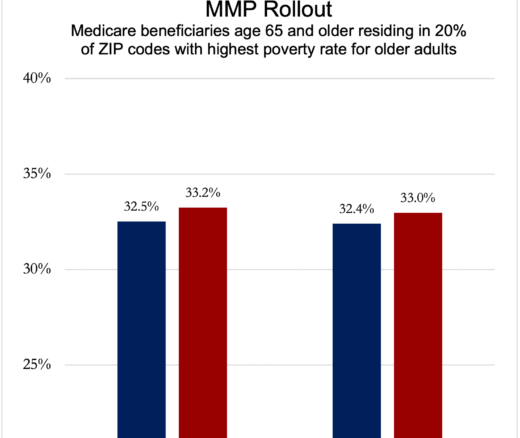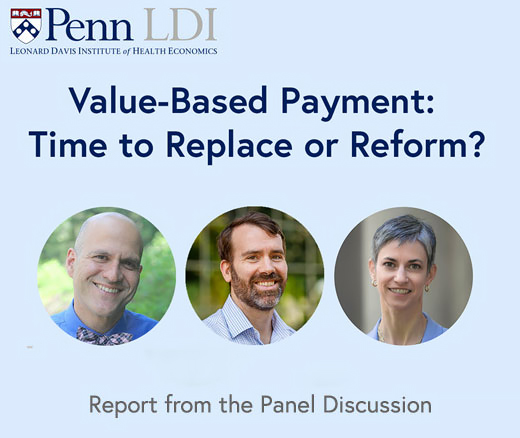
Black Older Adults With Cancer Are Far Less Likely to Get Any Care
New Study From LDI and MD Anderson Finds That Black and Low-Income, Dually Eligible Medicare Patients Are Among the Most Neglected in Cancer Care
Blog Post

Tobacco flavored to taste and smell like fruit, mint, or candy entices kids into trying it. Of U.S. 12- to 17-year-olds who experiment with tobacco products, most first do so using a flavored tobacco product. Flavored e-cigarettes are particularly popular, leading to a youth vaping epidemic.
In an effort to prevent young people from using tobacco, some cities and states have enacted bans on the sale of flavored products, including menthol. On April 28, 2022, the Food and Drug Administration announced a much anticipated proposed rule to ban sales of menthol-flavored cigarettes and flavored cigars nationally. This rule is intended to prevent youth smoking initiation and to reduce tobacco-related disease and death. Whether these bans are reducing tobacco use among youth is under ongoing investigation.
A 2021 JAMA Pediatrics research letter analyzing youth smoking rates following the ban on sales of flavored tobacco products in San Francisco, California, surprisingly concluded that the ban was associated with increased smoking among high school students under the age of 18 relative to other school districts.
In a recent special communication in BMJ Tobacco Control, we report an alternative explanation for the San Francisco findings. It’s not that the flavor ban increased tobacco use but rather that the analysis failed to accurately measure the impact of the policy because the researchers used data that was collected before the policy was fully implemented.
Their data came from the 2019 wave of the Youth Risk Behavior Surveillance System (YRBSS) that was conducted between November and December 2018 when compliance with the city’s flavored tobacco sales restriction was low. Although San Francisco’s ban started in July 2018, its enforcement was delayed until January 2019. As a result, in December 2018, only 17% of retailers were complying with the law, and flavored tobacco products continued to be available in the majority of retailers up to the end of 2019. Therefore, the San Francisco YRBSS data preceded the flavor ban enforcement and should not be used to conclude that the ban was associated with increased youth smoking.
As a comparison, we reviewed trends in youth vaping and smoking data from Oakland, California, between 2017 and 2019. Oakland implemented a restriction on convenience store flavored tobacco sales that became effective earlier than in San Francisco, beginning in July 2018. We confirmed that data for the 2019 Oakland YRBSS were collected after this restriction went into effect. When we analyzed these data, we found that both vaping and cigarette use declined in Oakland among high school youth following the city’s sales restriction. Additional data support a benefit for public health from the flavor ban in San Francisco. Notably, after implementation of the law, retail sales of all flavored tobacco products in San Francisco plummeted by 96%, as originally intended by this policy. Importantly, there was no evidence of a one-to-one substitution from using flavored tobacco products to non-flavored tobacco products because the total tobacco sales also decreased by 25% over the same period in San Francisco. Furthermore, the results of the 2019-2020 California Student Tobacco Survey, which was conducted after the enforcement of the flavor ban and showed that the prevalence of cigarette smoking among San Francisco high schoolers was 1.6% (compared with 4.7% based on the San Francisco 2017 YRBSS data), indicating that the flavor ban had not inadvertently increased youth smoking.
It is critical to evaluate both the intended and potential unintended impacts of flavored tobacco sales restrictions on youth tobacco use behaviors to ensure that evidence-based prevention efforts are implemented to protect youth from initiating tobacco product use. Data collected prior to the enforcement of the laws banning flavored products should not be used to assess their impact.
The tobacco industry ignores research demonstrating that flavored tobacco products are highly appealing to children and teenagers, lead to more adolescent nicotine addiction, and increase the risks of subsequently using other tobacco products like cigarettes. But the majority of the evidence is clear, to reduce youth tobacco use, it is imperative that federal, state, and local policymakers prohibit the sale of flavored e-cigarettes and other flavored tobacco products including mint and menthol flavors.
The study, Youth Tobacco Use Before and After Flavoured Tobacco Sales Restrictions in Oakland, California and San Francisco, California was published on March 17, 2022 in BMJ Tobacco Control. Authors were Jessica Liu, Lester Hartman, Andy S. L. Tan, and Jonathan P. Winickoff.




New Study From LDI and MD Anderson Finds That Black and Low-Income, Dually Eligible Medicare Patients Are Among the Most Neglected in Cancer Care

Her Transitional Care Model Shows How Nurse-Led Care Can Keep Older Adults Out of the Hospital and Change Care Worldwide

Chart of the Day: Medicare-Medicaid Plans—Created to Streamline Care for Dually Eligible Individuals—Failed to Increase Medicaid Participation in High-Poverty Communities

Penn LDI Debates the Pros and Cons of Payment Reform

Direct-to-Consumer Alzheimer’s Tests Risk False Positives, Privacy Breaches, and Discrimination, LDI Fellow Warns, While Lacking Strong Accuracy and Much More

One of the Authors, Penn’s Kevin B. Johnson, Explains the Principles It Sets Out